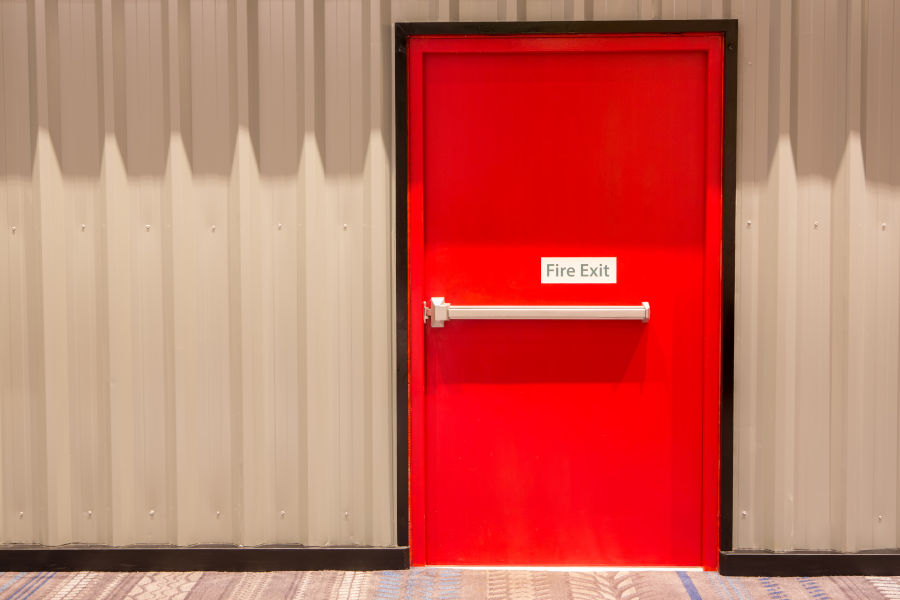Fire Rated Doors: Essential Safety and Security for Your Property
 Created with GIMP
Created with GIMP
Fire-rated doors play a crucial role in safeguarding lives and property by preventing the spread of fire and smoke within a building. These specialized doors are an integral part of any fire protection strategy, providing both safety and peace of mind. In this article, we’ll explore what fire-rated doors are, their benefits, how they work, types available, installation, and why they are a critical component of building safety.
What is a Fire Rated Door?
A fire-rated door is a specially designed door that can withstand fire and prevent it from spreading for a specified period, typically ranging from 30 minutes to 3 hours. These doors are constructed using fire-resistant materials such as steel, gypsum, or wood with a fire-resistant core, and they are rigorously tested to meet specific fire safety standards. Fire-rated doors are commonly used in commercial buildings, residential complexes, and industrial facilities to protect occupants and minimize damage in the event of a fire.
Why Choose Fire Rated Doors?
Fire-rated doors are an indispensable part of any building’s fire safety plan. They offer critical protection for both lives and property, ensuring that fires are contained and that occupants have enough time to evacuate. For those looking to enhance the safety of their buildings in Singapore, exploring options for Fire Rated Door Singapore is a wise investment that can provide peace of mind and meet all necessary safety regulations.
Benefits of Fire Rated Doors
Life Safety
The primary function of a fire-rated door is to save lives by containing fire and smoke, allowing occupants more time to evacuate safely. By slowing down the spread of fire, these doors can significantly reduce the risk of injury or death during a fire emergency.
Property Protection
Fire-rated doors help to contain fire within a specific area, preventing it from spreading to other parts of the building. This containment not only protects lives but also minimizes property damage, potentially saving valuable assets and reducing repair costs.
Compliance with Building Codes
Many building codes and regulations require the installation of fire-rated doors in certain areas, such as stairwells, corridors, and exits. By installing fire-rated doors, property owners can ensure compliance with these legal requirements and avoid potential fines or penalties.
Insurance Benefits
Having fire-rated doors installed can lead to lower insurance premiums, as they reduce the risk of extensive fire damage. Insurance companies often recognize the value of fire-rated doors in enhancing the overall safety of a building.
Enhanced Security
In addition to their fire-resistant properties, fire-rated doors are also robust and durable, providing an added layer of security against unauthorized access. This makes them an excellent choice for securing sensitive areas within a building.
How Do Fire Rated Doors Work?
Fire-rated doors are engineered to withstand high temperatures and block the passage of flames and smoke. They are typically equipped with the following features:
- Fire-Resistant Materials: The door and its frame are made from materials that can endure intense heat without warping or failing. Common materials include steel, composite, or specially treated wood.
- Intumescent Seals: These seals expand when exposed to heat, filling gaps around the door to prevent the spread of smoke and fire.
- Automatic Closing Mechanisms: Fire-rated doors are often fitted with self-closing devices that automatically close the door when a fire alarm is triggered, ensuring the door is in place to contain the fire.
- Fire-Resistant Glass: If the door has windows, the glass is typically made from fire-resistant material that can withstand high temperatures without shattering.
- Fire Rating Label: Fire-rated doors are labeled with their fire rating, indicating the amount of time they can withstand fire exposure, such as 30, 60, 90, or 120 minutes.
Types of Fire Rated Doors
Wooden Fire Rated Doors
Wooden fire-rated doors are commonly used in residential and commercial buildings. They are aesthetically pleasing and can be customized to match the interior design. Despite being made of wood, these doors are treated and constructed in a way that meets fire safety standards.
Steel Fire Rated Doors
Steel fire-rated doors offer maximum strength and durability. They are often used in industrial settings, stairwells, and exits due to their robust construction and high fire resistance. Steel doors can withstand extreme conditions and are less likely to suffer damage from impact or wear.
Glass Fire Rated Doors
Glass fire-rated doors combine safety with aesthetics, allowing for visibility and light transmission while still providing fire protection. The glass used in these doors is specially treated to resist high temperatures and maintain its integrity during a fire.
Composite Fire Rated Doors
Composite fire-rated doors are made from a combination of materials such as wood, steel, and gypsum. These doors are designed to offer the benefits of multiple materials, providing both fire resistance and durability.
Installation and Maintenance of Fire Rated Doors
Installation
Proper installation is critical to ensuring the effectiveness of a fire-rated door. The door must be installed by a qualified professional who understands the specific requirements for fire-rated doors, including the correct fitting of the frame, seals, and hardware. Any gaps or improper installation can compromise the door’s ability to contain fire.
Maintenance
Regular maintenance of fire-rated doors is essential to ensure they function correctly in an emergency. This includes:
- Regular Inspections: Check the door for any signs of damage, wear, or warping. Ensure the seals are intact and that the door closes properly.
- Testing: Periodically test the automatic closing mechanism and any other safety features to ensure they are working as intended.
- Repairs: Promptly address any issues with the door, such as loose hinges, damaged seals, or malfunctioning closing devices.







